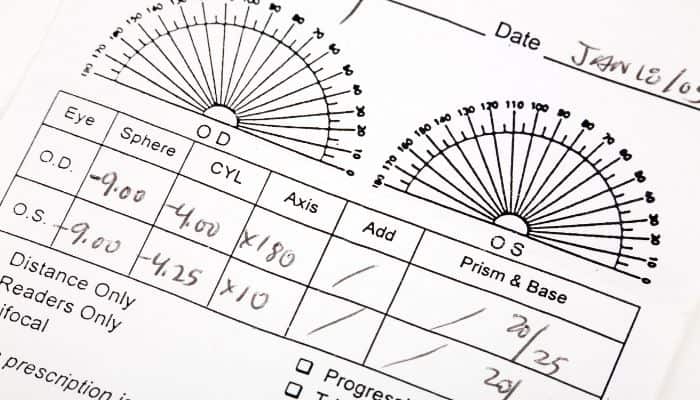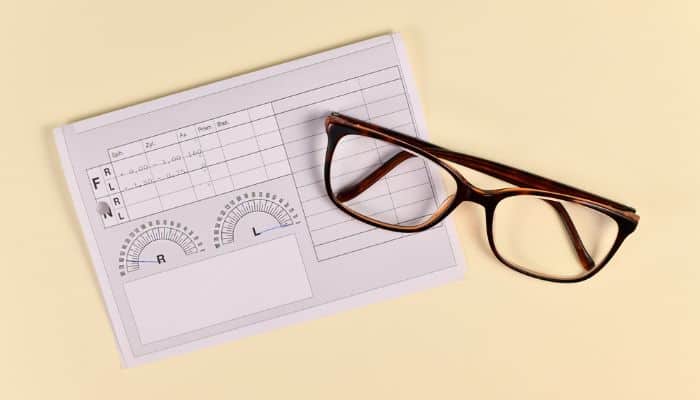Decoding Your Eyeglasses Prescription: OD vs OS

Have you ever wondered how to decipher your eyeglasses prescription? When you receive a prescription from an eye doctor, you may come across the terms OD and OS. These Latin abbreviations stand for:
- Oculus Dexter (OD): Right Eye
- Oculus Sinister (OS): Left Eye
The right eye’s information (OD) is usually listed first, followed by the left eye (OS).
Eyeglass Prescription Table
A typical eyeglass prescription is organized in a table format, which might look like this:
| Sph | Cyl | Axis | Add | |
|---|---|---|---|---|
| OD | -2.00 | +0.50 | 90 | +2.00 |
| OS | -1.50 | -1.00 | 180 | +2.00 |
In this example:
- The right eye (OD) information is in the first row
- The left eye (OS) information is in the second row
The column headings indicate different aspects of the prescription:
- Sphere (Sph): Overall lens power needed to correct nearsightedness or farsightedness, measured in diopters (D)
- Cylinder (Cyl): Amount of astigmatism correction needed, measured in negative or positive diopters
- Axis: Orientation of the astigmatism correction, measured in degrees from 0 to 180
- Addition (Add): Optional value indicating additional magnifying power needed for reading or close-up work, typically used for bifocal or progressive lenses
The table format may vary slightly depending on the eye doctor or the country where the prescription was written. However, the basic structure will generally include separate values for the right and left eyes.
How To Read Your Glasses Prescription
Why Are Some Boxes Left Blank?

Not all prescriptions require values for all aspects. For example, if you don’t have astigmatism or don’t require reading glasses, the corresponding boxes for Cylinder and Addition may be left blank.
Additionally, your eye doctor may leave a box blank if they determined no correction is necessary for you.
In some cases, a blank box may indicate that your doctor was unable to obtain an accurate measurement for that aspect of the prescription.
Your doctor may ask you to return for a follow-up appointment or refer you to a specialist for further testing.
Understanding + and – Values
A positive (+) diopter value in the Sphere (Sph) column indicates farsightedness (difficulty seeing objects up close), while a negative (-) value indicates nearsightedness (difficulty seeing objects far away clearly).
The diopter value indicates the degree of refractive error present. A higher diopter value means the refractive error is more severe or pronounced.
The Cylinder (Cyl) value, if filled in, is also expressed in negative or positive numerical values, indicating the presence of astigmatism:
- Negative values: Nearsighted astigmatism
- Positive values: Farsighted astigmatism